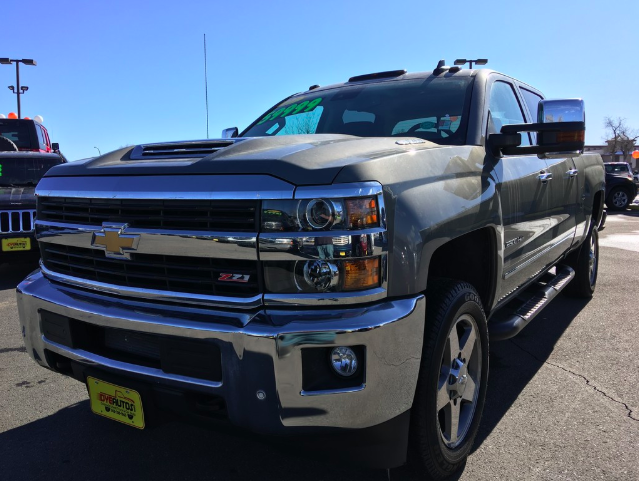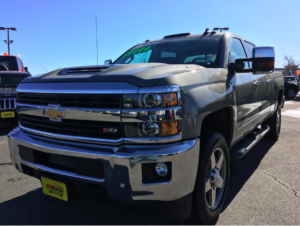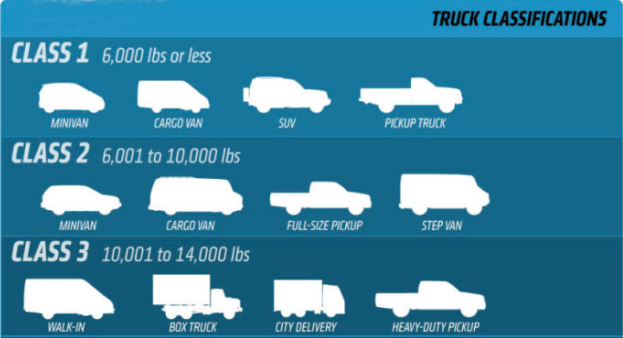Dye Autos Denver Area Truck and Automotive Blog
Documents to Bring to the Dealership When Financing a Pickup Truck
 You’ve done your research, checked your credit report to make sure it’s accurate, and you’re ready to get serious about buying a pickup truck. You feel more than ready to secure financing a pickup truck, sign on the dotted line and drive home in your new ride.
You’ve done your research, checked your credit report to make sure it’s accurate, and you’re ready to get serious about buying a pickup truck. You feel more than ready to secure financing a pickup truck, sign on the dotted line and drive home in your new ride.
Sounds pretty good, right?
Sadly, there’s a chance you could drive home in your old vehicle, kicking yourself for having forgotten one of the documents you need to finalize the purchase. Here’s how to be prepared for getting the deal done on the day you’re ready to buy.
8 things to bring with you when financing a pickup truck
1. Valid driver’s license.
Customer identification is required by federal law. The types of documentation required will vary from lender to lender. In most circumstances, you’ll be required to present a government-issued I.D. showing your photograph and residence. For most, this will be a driver’s license or passport.
2. Proof of insurance.
When the dealership asks you to sign a bill of sale on your new pickup truck, you’ll also be asked to provide proof of insurance. The insurance you have must comply with state law and meet any additional requirements of the lender before you’ll be able to drive the vehicle off the lot.
If you have an existing auto insurance policy, your new car purchase may even be covered by your existing policy for a certain grace period, so be sure to check.
3. Trade-in documents
- Certificate of Title
- Registration
- Loan statement and payoff info
- Lender contact info (usually found on your loan statement)
- Service records
- Extra keys
- Any added accessories that came with your trade-in
4. Proof of income.
Your two most recent paycheck stubs. If you have more than one job, bring the stubs from those as well.
If you’re self-employed, it gets a bit trickier. Each deal is different but you’d be safe bringing at least your most recent tax return and three most recent bank statements.
5. Proof of residence.
Federal law requires lenders (and dealerships who work with them) to gather information on your residence, as well as proof of that residence. If your driver’s license is current, that may be sufficient for most dealers. You may also use your mortgage statement to verify your home address or any piece of personalized mail you have received within the last month. This may include:
- Utility bill
- Credit card statement
- Bank statement
- Property tax bill
- Medicaid or Medicare benefit statement
- Auto insurance policy
- Homeowners or renters insurance policy
You may not use a P.O Box. The only exception is for Army Post Office boxes (APO) or Fleet Post Office (FPO).
6. List of references.
What do lenders mean by a reference? Thankfully it’s a lot simpler than it might seem. As far as they’re concerned, a reference is simply someone who knows you. This means that the person can be a relative, friend, co-worker, your pastor or even your boss. As long as they’re not living in your household, they can be a reference.
Under most circumstances, six references will be sufficient. Some lenders ask for only four, but since a few may require more than this it’s always a good idea to have at least six names you can use.
7. Down payment.
Dealership forms of down payment:
- Cash
- Personal check
- Cashier’s check
- Credit card
- Debit card
- Trade-in equity
Your trade-in vehicle can serve as a down payment. If you still owe on that loan, the amount of “equity” you have can serve as your down payment. “Equity” is the difference between your trade-in’s loan payoff amount and the actual cash value of your vehicle.
8. Pre-Approval from the dealership.
The Internet is full of free advice about getting pre-approved bank or credit union loan. But no one tells you about the “insider’s secret” to financing a pickup truck: get pre-approved at the dealership!
As car loan interest rates rise, the need becomes greater for consumers to work a little harder when shopping for the best deals. Dealerships are the best place to get a loan for your pickup truck.
- Dealerships have close relationships with ALL types of lenders.
- Dealerships have flexible lenders who are open to people who have lower credit scores.
- It’s super convenient since you’re already at the dealership.
At Dye Autos, we’ve sold thousands of pickup trucks and we’ve helped a lot of people who thought they’d never be able to afford a vehicle.
Give us a chance to help you. Call us at (303) 286-1665 or use our handy online financing pre-approval form >>here<<.
Read More There are a lot of things to think about when considering the purchase of a used pickup truck.
There are a lot of things to think about when considering the purchase of a used pickup truck.
- What size truck is right for me?
- Will I be hauling or towing anything?
- Does my budget fit for what I need?
If you’ve been shopping, you know that a pickup truck isn’t just a pickup truck.
In this guide, we’ll review the three different pickup trucks that consumers purchase the most, along with their specific attributes and uses.
As always, please get in touch with us if you have questions. At Dye Autos, we have over 100 years combined experience selling pickup trucks and we’re happy to help you!
A word about GVWR.
The US DOT puts trucks into classes by “Gross Vehicle Weight Rating” (GVWR) ranked from 1 to 8 (smallest to largest). In our example here, we’re going to cover Class 1, 2 and 3. These classes exist for safety regulation, commercial designation, and registration purposes.
GVWR refers to the maximum operating weight a truck can possibly carry while driving including the truck itself. GVWR classes have nothing to do with what parts the truck is fitted with, how beefy the suspension is, or what the truck looks like. They are solely based on weight.
So if a truck’s GVWR is 10,000 pounds, that’s the most the manufacturer and government have certified the truck to possibly weigh with fuel, passengers, and cargo.
Class 1, 2 and 3 are considered “Light Duty” even though there are the heavy duty pickup trucks in the light duty classification.
Now, let’s talk about the three sizes of pickup trucks so that when you’re out there shopping, you’ll know which type to look at first.
Compact Pickup Truck
Compact pickup trucks are built on a separate chassis frame from their full-size brethren and usually offer a range of four-cylinder and V6 engines. Not as small as past generations, these trucks are sometimes referred to as midsized and it can get confusing.
Today’s smallest trucks aren’t very small at all. As many drivers have discovered, some are really midsize trucks with near full-size proportions.
The most popular compact trucks include the Toyota Tacoma, Nissan Frontier, Ford Explorer Sport Trac, and Honda Ridgeline.
Midsize Pickup Truck
Midsize pickup trucks are commonly used as general purpose passenger cars here in Colorado and the U.S. They are popular with construction and tradespeople along with everyday commuters and families. Because of this, there is demand for a pickup truck that is bigger than a compact, yet smaller and more fuel efficient than a full-size pickup. Enter the midsized truck!
The increased popularity of midsize trucks has led to the need for several different configurations and style of cab. Mid-size trucks can usually be found with single, extended, or crew cab configurations depending on what’s offered for the model and based on your needs.
Notable midsize trucks include the Chevrolet Colorado, GMC Canyon, Dodge Dakota, and Ford Explorer SportTrac.
Full-Size Pickup Truck
Full-size pickup trucks are the brawny workhorses of the pickup world.
They are larger and more rugged, and they ride higher off the ground than compacts/midsizes do. They also come in more configurations of cab type, bed size, and drivetrain.
The basic pickup truck is what used to be called the half-ton truck and is now often called 1500-series. Current models in this class include the Chevrolet Silverado 1500, Ram 1500, Ford F-150, GMC Sierra 1500, Nissan Titan, and Toyota Tundra. These form the backbone of the pickup truck market. They serve well as work trucks and, for many, as a family car substitute.
Heavier-duty pickup trucks, which may carry numerical designations such as 2500 or 3500, are configured for carrying very serious loads and for hauling fifth-wheel trailers, those with a hitch point in the center of the cargo bed. These are bulky trucks for the most demanding chores, making them great for hauling a huge trailer.
Summing it all up…
We know you have a lot of choices when it comes to where you buy your next pickup truck. That’s why we share our expertise with you so that when the time comes, you’ll consider Dye Autos! Give us a call – we’d love to help! (303) 286-1665.





